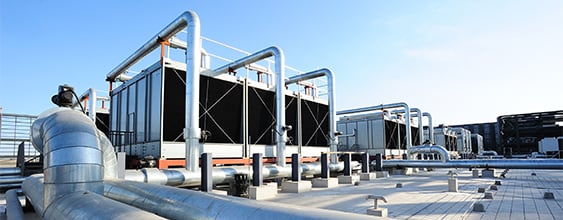We'll use significantly less total energy as we electrify, since there are lower total losses in electric systems. As an example, electric cars have significantly better energy efficiency than existing gasoline vehicles. And, since they can be charged during the day from solar panels and store that energy for several days, car batteries will become a larger portion of the daily/weekly electricity storage markets. In the future, vehicle-to-grid (V2G) technology will allow cars to provide more value to owners.
A new technology that is especially interesting to me is a high temperature thermal storage unit. The simplest way to describe it is like an electric boiler that can time shift when you use that electricity. These are devices that absorb electricity when it's cheap and clean, such as solar energy, and store it for future use. For example, a college campus may have a large solar farm that produces electricity to heat the storage device. Then the device creates steam to heat buildings or to process experiments at night. The steam can be used any time of day, and the facility doesn’t need to buy electricity around the clock. Electricity is currently one of the most time dependent commodities in the world — prices fluctuate significantly throughout the day, week, month and season.
Can you tell us more about electrification opportunities?
The future of electrification promises significant energy savings and efficiency improvements. Fossil fuels involve substantial energy losses in extraction, processing, and transportation, whereas electric systems, particularly those powered by renewable sources like solar, are far more efficient. As an example, when we combust fossil fuels for heat, the highest potential efficiency is ~99%. But electrically driven heat pumps have highest potential efficiencies, far higher than 100%, since they are moving heat from one location to another. Typical heat pump installations will have annual efficiencies more than 200%, with peak efficiencies at 500%. Geothermal exchange systems can make heat pumps even more efficient, especially during the critical winter months.
Another area of opportunity is for industrial process heating. Again, heat pumps are a critical technology that has improved in recent years by leaps and bounds. Industrial processes, from canning vegetables to glass making, require high heat and 24/7 energy flows. Industrial heat is a huge driver of energy use around the world. WSP recently supported a multinational manufacturing company on a worldwide study of electrification opportunities in their factories.
Transitioning to electric solutions can reduce total energy consumption and waste, making our energy systems more resilient and sustainable. As we electrify, enhancing grid resilience and storage options will be crucial to overcoming perceptions of fragility and ensuring a reliable primary energy system. This shift can accelerate progress towards a greener future.
Where are you on your personal energy journey to electrify everything?
Great question. At the residential level, organizations like Rewiring America highlight that most homes have four main fossil fuel appliances: stove, hot water heater, heating system and dryer; in addition to the car. Electrifying these devices can greatly impact energy use and sustainability.
In 2021, I bought a house with an old steam radiator heating system and no air conditioning. We installed new electric heat pumps for heating and cooling, significantly reducing our reliance on fossil fuels. We swapped the gas stove for an induction cooktop and found a ventless heat pump clothes dryer. The only remaining fossil fuel appliance is our hot water heater, which we plan to replace with an electric heat pump option. Our car is a plug-in hybrid, chosen for practicality due to frequent long trips to see the grandparents.













